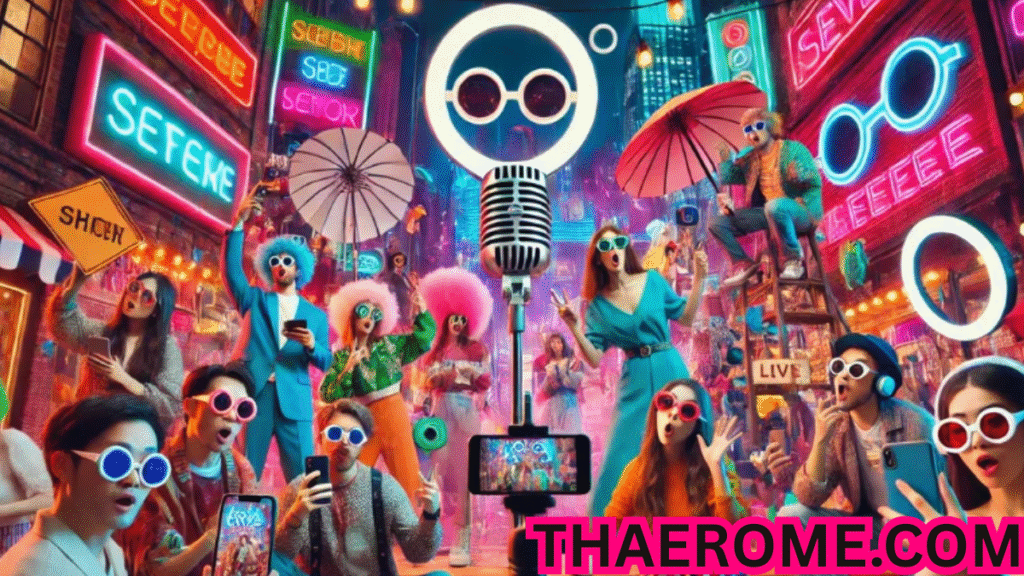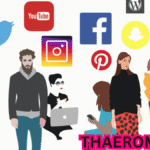Influencersgonesild In the ever-evolving landscape of social media, influencers have become powerful figures, shaping trends, opinions, and consumer behavior. However, a new phenomenon has emerged that challenges the traditional image of the polished, curated influencer: the “Influencers Gone Wild” trend. This term encapsulates a range of behaviors where influencers push boundaries, engage in controversial actions, or create content that is deemed outrageous or inappropriate. While some argue that this represents a new form of authenticity and rebellion against societal norms, others view it as a dangerous trend that undermines the integrity of digital platforms and the well-being of audiences.
The Rise of the Wild Influencer
The allure of social media fame has driven many individuals to seek viral moments that can catapult them to stardom. Platforms like TikTok, Instagram, and YouTube reward sensational content with increased visibility, leading influencers to engage in increasingly bold and sometimes reckless behavior. From staged pranks to controversial statements, these actions often garner millions of views and widespread attention.
One notable example is the case of Sam Jones, an influencer who faced severe backlash Influencersgonesild after stealing a baby wombat from its mother and mishandling it for a viral video. This act not only caused distress to the animal but also led to public outrage and condemnation from Australian politicians, highlighting the ethical concerns surrounding such content .
The Psychological Drivers Behind the Wild Behavior
Several psychological factors contribute to influencers’ decision to engage in wild behavior. The pursuit of validation is a significant motivator; social media platforms are designed to reward users with likes, comments, and followers, creating a cycle of dependency on external validation. For influencers, this can lead to a constant need to outdo themselves and capture attention, even if it means engaging in risky behavior .
Additionally, the fear of irrelevance in a rapidly changing digital landscape can push influencers to resort to extreme measures to maintain their visibility. The anonymity and detachment provided by digital platforms can also lead to the “online disinhibition effect,” where individuals feel less restrained by social norms and more inclined to engage in behavior they would avoid in face-to-face interactions .
The Impact on Audiences and Society
The consequences of influencers’ wild behavior extend beyond the digital realm. Young audiences, in particular, may view these influencers as role models and attempt to emulate their actions. This can lead to the normalization of risky or inappropriate behavior, as seen with trends like the Tide Pod Challenge, where individuals ingested laundry detergent pods after seeing them featured in viral videos .
Moreover, the constant exposure to sensational content can desensitize audiences, making them more likely to seek out increasingly extreme material. This creates a cycle where the demand for outrageous content fuels the production of more extreme behavior, further perpetuating the “Influencers Gone Wild” phenomenon.
The Business of Wild Content
Brands have recognized the potential of partnering with influencers who can generate viral content. However, this comes with risks. Associating with an influencer who engages in controversial behavior can tarnish a brand’s image if the backlash outweighs the buzz. Some companies now vet influencers more carefully, prioritizing authenticity over shock value, and focusing on long-term relationships rather than short-term viral success .
Additionally, the monetization of social media platforms plays a significant role in shaping influencer behavior. With financial incentives tied to engagement metrics like views and likes, some influencers may prioritize sensational content over ethical considerations. This underscores the need for platforms to implement stricter guidelines and for brands to be more discerning in their partnerships .
The Role of Social Media Platforms
Social media platforms have a responsibility to moderate content and enforce policies that prevent harmful behavior. However, enforcement is often inconsistent, and some influencers continue to thrive despite repeated controversies. This lack of accountability undermines the integrity of digital spaces and can contribute to the perpetuation of the “Influencers Gone Wild” trend .
Improved content moderation, clearer guidelines, and more robust enforcement mechanisms are essential to curb the rise of sensational and harmful content. Platforms must strike a balance between allowing creative expression and protecting users from potentially damaging material.
Moving Forward: Striving for Balance
While the “Influencers Gone Wild” phenomenon highlights the darker side of social media fame, it also presents an opportunity for reflection and change. Influencers, brands, and platforms must work together to promote responsible content creation and consumption. This includes fostering a culture of authenticity, encouraging ethical behavior, and implementing measures to protect audiences from harmful content.
As the digital landscape continues to evolve, it is crucial to prioritize the well-being of individuals and communities over the pursuit of viral fame. By doing so, we can ensure that social media remains a platform for positive engagement and meaningful connections.
Frequently Asked Questions (FAQs)
1. What does “Influencers Gone Wild” mean?
“Influencers Gone Wild” refers to a trend where social media influencers engage in controversial or outrageous behavior to gain attention and increase their visibility. This can include actions that are deemed unethical, harmful, or inappropriate.
2. Why do influencers engage in such behavior?
Several factors contribute to this behavior, including the pursuit of validation, fear of irrelevance, and the desire for increased engagement and fame. The structure of social media platforms often rewards sensational content, encouraging influencers to push boundaries.
3. How does this affect audiences?
Audiences, particularly younger viewers, may emulate the behavior of influencers they admire, leading to the normalization of risky or inappropriate actions. This can have negative implications for individual behavior and societal norms.
4. What role do brands play in this phenomenon?
Brands can inadvertently contribute to the problem by partnering with influencers who engage in controversial behavior. While some brands capitalize on the attention generated by such influencers, others are distancing themselves to protect their image and values.
5. What can be done to address this issue?
Solutions include stricter content moderation by social media platforms, clearer guidelines for influencers, and more responsible brand partnerships. Additionally, fostering a culture of authenticity and ethical behavior within the influencer community is essential.
6. Is there any positive aspect to this trend?
While the behavior associated with “Influencers Gone Wild” is generally negative, it has sparked important conversations about accountability, mental health, and the responsibilities of influencers. This awareness can lead to positive changes in the industry.
7. How can influencers maintain their authenticity without resorting to extreme behavior?
Influencers can focus on creating content that aligns with their values and resonates with their audience. By prioritizing meaningful engagement over sensationalism, they can build a loyal following and maintain their integrity.
8. Are social media platforms doing enough to regulate content?
While platforms have implemented policies to address harmful content, enforcement is often inconsistent. More robust moderation systems and clearer guidelines are needed to effectively regulate content and protect users.
9. How can audiences protect themselves from harmful content?
Audiences should be critical of the content they consume, Influencersgonesild question the authenticity of influencers, and be aware of the potential impact of sensational material. Utilizing platform features like content reporting and parental controls can also help manage exposure.
10. What is the future of influencer culture?
The future of influencer culture may see a shift towards greater accountability and responsibility. As audiences become more discerning and platforms enhance their moderation efforts, there is potential for a more ethical and sustainable influencer ecosystem.


